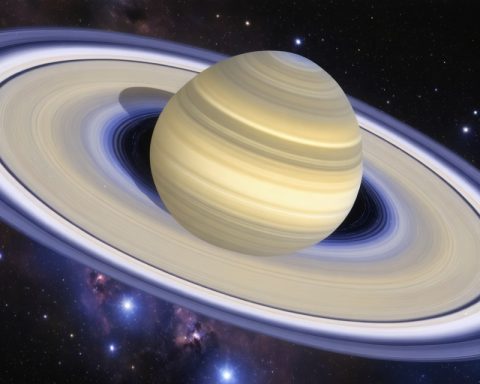- NASA’s James Webb Space Telescope has captured unprecedented images of auroras on Neptune, a discovery revealing hidden atmospheric phenomena.
- Neptune’s auroras, unlike Earth’s, are located across its mid-latitudes due to its uniquely distorted magnetic field.
- The presence of the trihydrogen cation (H3+) was detected, confirming theories about Neptune’s atmospheric composition shared with other gas giants.
- Neptune’s atmospheric temperature has dropped significantly since past measurements, illuminating why auroras were previously undetected.
- Astronomers aim to monitor Neptune throughout a solar cycle to better understand its magnetic field and atmospheric dynamics.
- The Webb Telescope continues to offer groundbreaking insights into the universe, advancing our knowledge of distant worlds and cosmic phenomena.
A swirling spectacle unfurled on the icy realm of Neptune as scientists peered through the powerful gaze of NASA’s James Webb Space Telescope. For the first time, researchers have illuminated the hidden auroral displays dancing around the distant gas giant, offering a breathtaking glimpse into an enigmatic atmospheric phenomenon. With its observatory perched in the cosmic abyss, Webb has captured what no telescope on Earth could—a celestial light show that unveils secrets buried beneath Neptune’s vast azure veil.
The mysterious dance of auroras—those captivating light displays usually witnessed in Earth’s polar regions—suddenly finds a new canvas far beyond the reaches of our world. It is the energetic particles, often ejected by the Sun, that are drawn into a planet’s magnetic embrace and collide with its upper atmosphere, creating vibrant glows. While similar displays have long been identified on our celestial neighbors—Jupiter, Saturn, and Uranus—Neptune’s auroras have remained tantalizingly elusive—until now.
Leading an illustrious team of astronomers, Dr. Henrik Melin from Northumbria University orchestrated this milestone through Webb’s sophisticated infrared eyes. With imagery of unprecedented clarity, the Telescope unveiled luminous splotches in cyan, marking auroral activity on Neptune with stunning resolution. An unexpected twist also surfaced: the now-documented presence of the trihydrogen cation, or H3+, a molecule birthed by these cosmic collisions. Previously seen on other giants, its discovery on Neptune confirms a long-held astronomical suspicion and completes the auroral picture of our solar system’s gas giants.
Yet, Neptune’s auroras defy expectation by sprawling not across its poles, as they do on Earth, but intriguingly across its mid-latitudes—a testament to the unique geometry of its magnetic field. This unexpected positioning, reminiscent of South America’s latitude on Earth, suggests a distorted magnetic landscape, first detected by Voyager 2 in 1989.
Webb’s near-infrared vision doesn’t just stop at visual grandeur. It unraveled another striking revelation—Neptune’s atmospheric temperature has plummeted by several hundred degrees since its last measurement three decades ago. This drastic cooling—down to a chill that’s just over half of Voyager’s 1989 records—may explain why these auroras have previously eluded detection.
Enticed by this enigmatic glow, astronomers are poised to follow Neptune’s serene dance throughout a full solar cycle. Such endeavor might shed light on the secrets of its oddly tilted magnetic field, potentially unlocking broader mysteries about the atmospheric dynamics of our solar system’s icy giants.
As the cosmos continues to surprise and awe, the Webb Telescope stands as a beacon of discovery, providing an unprecedented lens into the wonders of the universe—from the hidden auroras of Neptune to the ancient stardust scattered throughout the galactic frontier. The message is clear: with each new revelation, we move one step closer to understanding our place among the stars.
Neptune’s Mysterious Auroras Revealed: What We Can Learn from the Webb Telescope Discoveries
Introduction to Neptune’s Auroras
The discovery of auroras on Neptune through NASA’s James Webb Space Telescope marks a pivotal moment in our understanding of planetary atmospheres. The auroras on Neptune, unlike those on Earth, Jupiter, or Saturn, are uniquely positioned at mid-latitudes rather than the poles. This phenomenon offers new insights into the planet’s magnetic field and atmospheric composition, further expanding our knowledge of the universe.
How Auroras Form on Neptune
Auroras are typically created when energetic particles from the Sun are trapped by a planet’s magnetic field and interact with its atmosphere. On Earth, this interaction occurs at the poles, creating the well-known Northern and Southern Lights. On Neptune, these auroral displays are not aligned with the poles but spread across mid-latitudes, suggesting a different magnetic field structure that might result from its internal composition and rotational dynamics.
Key Discoveries and Their Implications
1. Trihydrogen Cation (H3+) Detection: The presence of H3+ on Neptune, observed through Webb’s infrared capabilities, provides evidence of similar molecular interactions occurring on other gas giants, supporting existing models of planetary auroras.
2. Unexpected Magnetic Field Geometry: Neptune’s auroras suggest a magnetic field that is tilted and irregular compared to Earth, reminiscent of observations from Voyager 2. This could impact our understanding of magnetosphere dynamics and their evolution over time.
3. Atmospheric Cooling: The drastic temperature drop observed in Neptune’s atmosphere raises questions about its climatic cycles and the influence of solar activity on distant planets.
How Astronomical Discoveries Impact Us
Understanding Neptune’s auroras can have broader implications in several areas:
– Planetary Science: These findings can refine models of magnetic fields and atmosphere interactions not only for Neptune but also for exoplanets with similar characteristics.
– Space Exploration: Enhanced understanding of the outer planets can guide future missions seeking life or studying climate on moons with atmospheres.
– Earth’s Climate Studies: Studying outer planets’ atmospheres may provide insights into atmospheric processes and climate dynamics applicable to Earth.
Real-World Applications and Future Research
– Astrophysics and Chemistry: The detection of H3+ and understanding of atmospheric chemistry on Neptune could lead to advances in astrochemical processes applicable across the cosmos.
– Technology Development: Instruments like the Webb Telescope push the limits of technology, fostering advancements that can cross over into other scientific or engineering fields.
Quick Tips for Aspiring Astronomers
– Follow Current Research: Keep updated with new telescope findings. For instance, use resources such as NASA’s official website.
– Engage with Astronomy Communities: Participate in online discussions or join local astronomy clubs to stay engaged and learn more about ongoing research.
– Hands-On Observation: If possible, join observatory tours or nights that provide access to telescopes.
Conclusion
The discovery of Neptune’s auroras invites us to rethink what we know about magnetic fields and atmospheric interactions in the solar system. As we delve deeper into these cold, blue depths, we not only uncover Neptune’s secrets but also refine our understanding of planetary science as a whole. This milestone achievement is a reminder of the vastness of cosmic knowledge yet to be explored, and a call to continue our relentless pursuit of celestial wonders.














